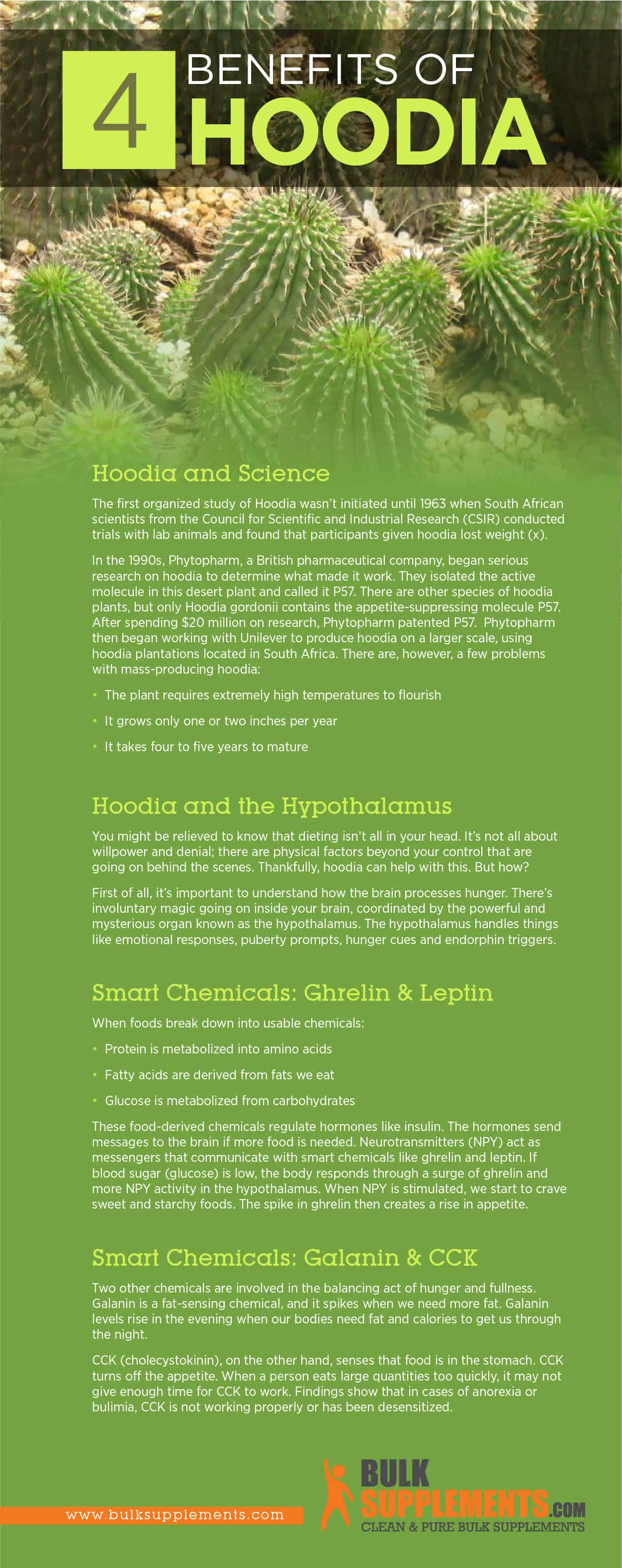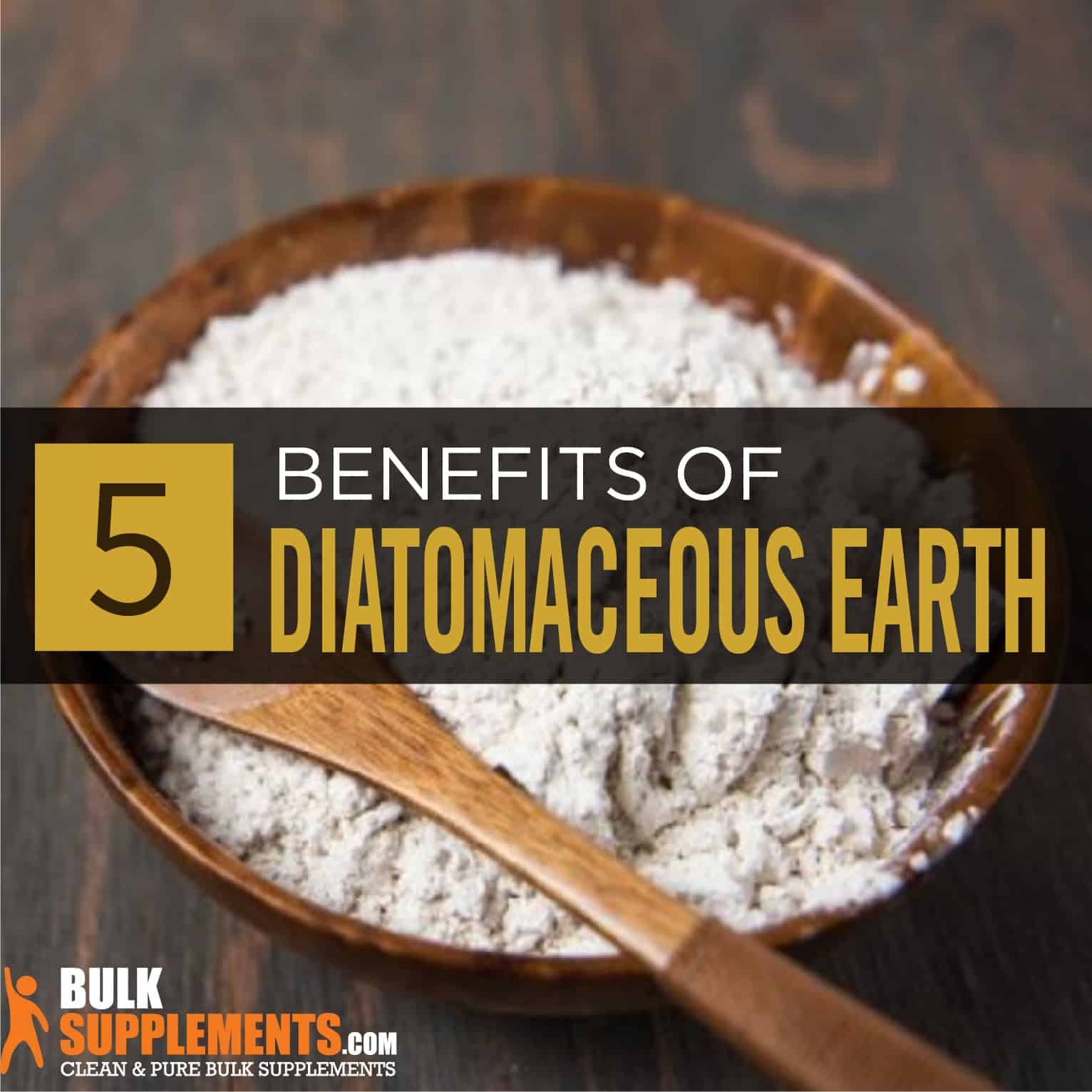Hoodia Benefits, Side Effects & Dosage
by James Denlinger Digital Marketing StrategistWhat is Hoodia?
Hoodia, or Hoodia gordonii, is a spiny, leafless, succulent plant that grows in the Kalahari Desert region of Africa near Botswana. Hoodia contains an active molecule that seems to restrain the brain’s hunger trigger. This property makes hoodia an excellent option for an appetite suppressant and anti-obesity supplement. Though there are challenges in harvesting hoodia, and research is still ongoing, the potential beneficial properties of hoodia are now available in supplement form.
Hoodia History
Nicknamed Bushman’s Hat by some and called “Xhoba” by the locals, hoodia came to the attention of a Dutch anthropologist in 1937. He was studying the nomadic San Bushmen of the Kalahari Desert. It was their tradition to bring some hoodia plant along on a long hunting trip. The tribesmen would suck on fresh or dried hoodia to fight hunger pangs and thirst on their travels through sparse desert areas. The plant was also used during times of famine.
Hoodia and Science
The first organized study of Hoodia wasn’t initiated until 1963 when South African scientists from the Council for Scientific and Industrial Research (CSIR) conducted trials with lab animals and found that participants given hoodia lost weight.
In the 1990s, Phytopharm, a British pharmaceutical company, began serious research on hoodia to determine what made it work. They isolated the active molecule in this desert plant and called it P57. There are other species of hoodia plants, but only Hoodia gordonii contains the appetite-suppressing molecule P57. After spending $20 million on research, Phytopharm patented P57. Phytopharm then began working with Unilever to produce hoodia on a larger scale, using hoodia plantations located in South Africa. There are, however, a few problems with mass-producing hoodia:
- The plant requires extremely high temperatures to flourish
- It grows only one or two inches per year
- It takes four to five years to mature
Despite the challenges in producing larger quantities of hoodia, CSIR signed a benefit-sharing agreement with the San people for using the native hoodia that grows in their backyard. As part of the agreement, the CSIR has agreed to give the San people a share of royalties from the sale of the patented extract.
Hoodia and the Hypothalamus
Curbing your appetite is not just purely psychological. In other words, it’s not all about willpower and denial. There are physical factors beyond your control that are going on behind the scenes. Thankfully, hoodia can help with this. But how?
First of all, it’s important to understand how the brain processes hunger. There’s involuntary magic going on inside your brain, coordinated by the powerful and mysterious organ known as the hypothalamus. The hypothalamus handles things like emotional responses, puberty prompts, hunger cues and endorphin triggers.
The desire to eat is influenced by a complex group of chemicals
Picture the hypothalamus as an orchestra director, waving his hand to ask for slightly more chemical uptake here and a little less there. A beautiful balance results when the body does its job, and we would be wise to listen to the signals our body is giving us. In addition to the inner chemical overture, the sight and smell of food can provoke the desire to eat, which can lead to unhealthy eating habits.
Smart Chemicals: Ghrelin & Leptin
When foods break down into usable chemicals:
- Protein is metabolized into amino acids
- Fatty acids are derived from fats we eat
- Glucose is metabolized from carbohydrates
These food-derived chemicals regulate hormones like insulin.
If more food is needed, the hormones send messages to the brain. Neurotransmitters (NPY) act as messengers that communicate with smart chemicals like ghrelin and leptin. If blood sugar (glucose) is low, the body responds through a surge of ghrelin and more NPY activity in the hypothalamus. We begin to crave sweet and starchy foods when NPY is stimulated. The spike in ghrelin creates a rise in appetite.
While you are sleeping, you aren’t ingesting any food, so your blood sugar levels dwindle. This decrease causes your brain to release NPY. If you skip breakfast, this influx of NPY can set you up, unaware, for a sugar binge in the afternoon. You can tell yourself to skip the candy bar, but your body’s inner signals will prompt you to eat it.
On the other side, we have leptin. Leptin’s job is to tell the body you’ve had enough. Leptin spikes after eating and restrains NPY from sending more hunger messages. Ghrelin and leptin ride the seesaw — when blood sugar is low, leptin is low and ghrelin is high; when you feel full, leptin is high and ghrelin is low.
 PIN IT
PIN ITSmart Chemicals: Galanin & CCK
Brain chemicals are associated with appetite. Galanin is a fat-sensing chemical, and it spikes when we need more fat. Galanin levels rise in the evening when our bodies need fat and calories to get us through the night.
CCK (cholecystokinin), on the other hand, senses that food is in the stomach. CCK turns off the appetite. When a person eats large quantities too quickly, it may not give enough time for CCK to work. Findings show that in cases of anorexia or bulimia, CCK is not working properly or has been desensitized.
Hoodia’s P57 Mimics Glucose
Glucose (blood sugar) is the fuel that runs the body’s cells. Its high or low levels cause the body to react and send smart chemicals to the rescue. The hypothalamus works to make sure the blood sugar is flowing at appropriate levels and sends appropriate messages. G-protein receptors work in coordination with the hypothalamus. They match up with glucose molecules and bind with them. When they find and bind with glucose, they tell the body there’s an adequate level of glucose — no need to eat more.
The receptors don’t bind with just any molecule — they only fit with glucose. But that’s the amazing thing about hoodia’s active molecule, P57. It fits the receptor. To the body, it looks like and fits like a glucose molecule. So, when P57 binds to the receptor, it fools the body into thinking there’s enough glucose. Thus, the person does not sense the need to eat. In fact, P57 binds stronger and longer to the receptors than a true glucose molecule and is many times more active than glucose.
Hoodia Testing
It is important to realize that scientific testing of hoodia has been limited. In a study conducted on rats, subjects ate less after being injected with hoodia. Phytopharm also conducted a clinical trial with eighteen human volunteers. The results showed that hoodia consumption reduced intake by an average of 1,000 calories per day in the subjects. To clarify, hoodia may be an adjunct to weight control when used with caloric restriction and an active, healthy lifestyle.
Hoodia and Weight Loss
The simple, practical summary of how hoodia helps you lose weight:
- Hoodia makes you less hungry
- Hoodia can prevent you from overeating
- When you are less hungry, you have time to make healthy food choices
If you want to try hoodia for appetite suppression and you can’t travel to the Kalahari desert to break off a chunk for yourself, there are other options available. You can buy Hoodia gordonii supplements in various forms, including hoodia capsules and hoodia powder.
Hoodia is an ingredient in some diet pills. Other names for hoodia are xhooba, ghaap, South African desert cactus and hoodia cactus.
Hoodia Cautions and Side Effects
- Unfortunately, there are products claiming to contain pure Hoodia gordonii that do not contain it — look for genuine South African hoodia
- Hoodia may suppress thirst as well as hunger; to prevent dehydration, you should consume 64 ounces of water each day
- The American Botanical Council, a non-profit research organization, has not received reports of any negative effects of those taking hoodia
- Children, pregnant or nursing mothers should not take hoodia
- Do not take hoodia if you are taking prescription medications without speaking to a doctor first.
Hoodia Dosage
Taken as a dietary supplement, 250 mg to 500 mg of hoodia should be taken before meals or as directed by your physician. Be sure to follow the package guidelines and discuss taking it with your health practitioner.
The Bottom Line
One of the most common stumbling blocks to weight loss is overconsumption. However, an appetite suppressant like hoodia in combination with a balanced diet and exercise program may force your body to use the fat and energy it has stored to promote weight loss. Hoodia has a strong history of use as an appetite suppressant. Hoodia gordonii is currently available in different forms to the public, though more research is necessary by the scientific and medical communities.
Sponsor Ads
Created on Apr 8th 2020 10:44. Viewed 293 times.




